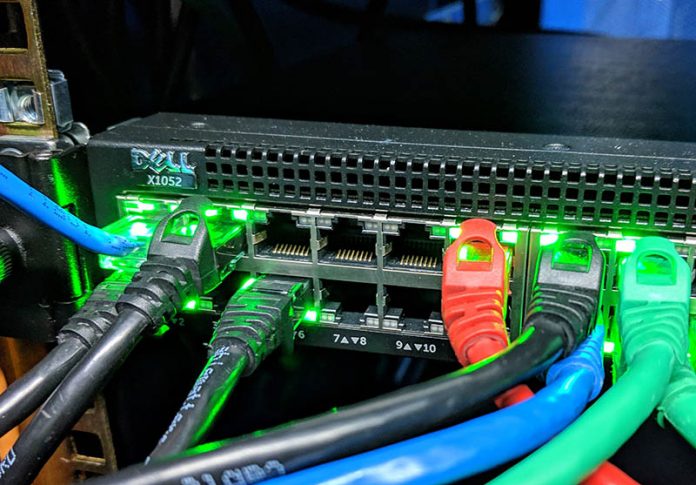This review hits close to home. Today we have our Dell X1052 review. This Dell Networking switch is really intriguing. It has 48x 1GbE ports, 4x SFP+ ports, and a web management UI all in a tight package. We have both the Dell X1052 and X1052P in the lab. We are going to focus our review on the Dell Networking X1052 which is a standard switch while the “P” in the X1052P denotes Power-over-Ethernet or PoE support. As part of this review, we did not just try the switch in our lab, we also have one in production serving STH’s web hosting cluster nodes management network.
Dell X1052 Switch Overview
From a hardware perspective, there are two main views of the Dell X1052 switch that will be instructive, front and back. The front of the switch has 48x 1GbE copper ports. There are also four 10GbE SFP+ cages. That is a major upgrade over previous generation solutions such as our QCT QuantaMesh T1048-LY4A that had 48x 1GbE, a web GUI, and only two SFP+ ports. The extra two SFP+ ports add a lot of flexibility. One has 40Gbps of uplink potential for 48Gbps of downstream ports as an example. Another example in a SMB setting is that these ports can be used for both switch to switch communications, such as to the 10GbE Dell X4012, as well as storage and virtualization host connectivity. In SMB environments where space is at a premium, having four rather than two SFP+ ports is a major improvement.

The Dell X1052 switch is a 1U form factor switch that uses Dell’s standard easy rail design to mount into a rack. Status LEDs are placed one each port as one would expect. If you are accustomed to using Dell EMC servers, the X1052 will feel familiar.

There is a USB port on the front of the switch which is useful for firmware updates and saves. We would have liked to have seen an out-of-band management port, but since this switch has 1GbE ports it is easy to manage from a laptop during the initial setup.

The rear of the switch is fairly basic. There is a power input, a console port, a lock, and a reset toggle. The power supply is a single PSU and is internal. One cannot hot-swap the PSU and there is only a single PSU which cuts into the unit’s availability features. For hot-swap and redundant power supplies, one can move up the networking stack from here.
Next, we are going to discuss management before moving on to performance and our final thoughts on the Dell Networking X1052.





Can these switches be programmed via cli?
I know that some of this review was copypasta from your X4012v review, which is fine, but I am curious about the sounds levels. Any measurements on that?
Alex, I have a X1052P (PoE version) and I would say that you should think of this as a web managed first product. The CLI is available but is much more limited than what you would see on higher-end switches.
Airwolf – these are pretty loud and meant for data center racks. Since Rohit did the review in the data center, he did not take sound readings.
Is a fan swap possible for this X1052p (PoE version), looking at the Noctua’s 40x20mm for this. Needs four fans. It’s not that loud per se, it’s the frequency of the harmonics that’s irritating to the ear. Switch is in my open rack sitting 6 feet from main computer.
Thanks!